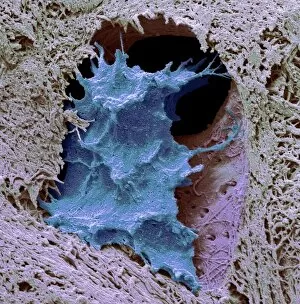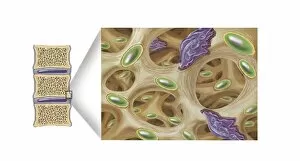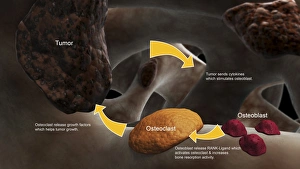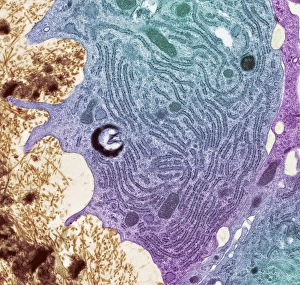Osteoclast Collection
Osteoclasts: The Architects of Bone Resorption In the intricate world of bone remodeling, osteoclasts play a crucial role in maintaining skeletal health
All Professionally Made to Order for Quick Shipping
Osteoclasts: The Architects of Bone Resorption In the intricate world of bone remodeling, osteoclasts play a crucial role in maintaining skeletal health. These specialized cells, derived from hematopoietic stem cells, are responsible for breaking down and resorbing old or damaged bone tissue. Under the scanning electron microscope (SEM), osteoclasts appear as large multinucleated cells with numerous finger-like projections extending onto the surface of bones. Their unique structure allows them to tightly adhere to bone surfaces and initiate the process of bone resorption. Working hand in hand with osteoblasts, which build healthy new bone tissue, osteoclasts ensure a delicate balance between formation and degradation within our skeletal system. This harmonious dance is essential for maintaining strong bones throughout life. A conceptual image illustrating the process of bone metastasis showcases how osteoclast activity can be hijacked by cancer cells invading bones. In this scenario, these destructive cells erode healthy bone tissue, leading to weakened structures that are prone to fractures. Furthermore, when it comes to conditions like osteoporosis – characterized by low bone density – overactive osteoclasts contribute significantly to excessive bone erosion. Under transmission electron microscopy (TEM), their intricate cellular machinery becomes visible as they actively degrade mineralized matrix components through a process known as resorption. Understanding the mechanisms behind osteoclastic activity has paved the way for developing targeted therapies aimed at regulating their function. By deciphering their molecular pathways and signaling cascades involved in both normal physiology and disease states like osteoporosis, researchers strive towards finding innovative treatments that could restore balance within our skeletal framework. Ultimately, studying these remarkable cells not only sheds light on fundamental aspects of human biology but also holds promise for improving quality of life for individuals affected by various skeletal disorders such as fractures or age-related degenerative diseases like osteoporosis.












